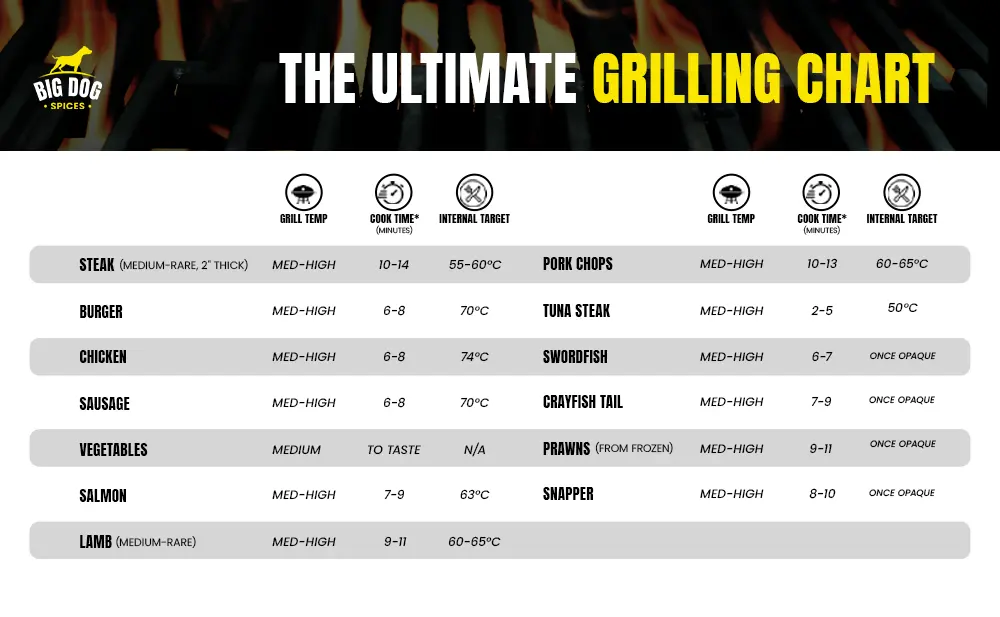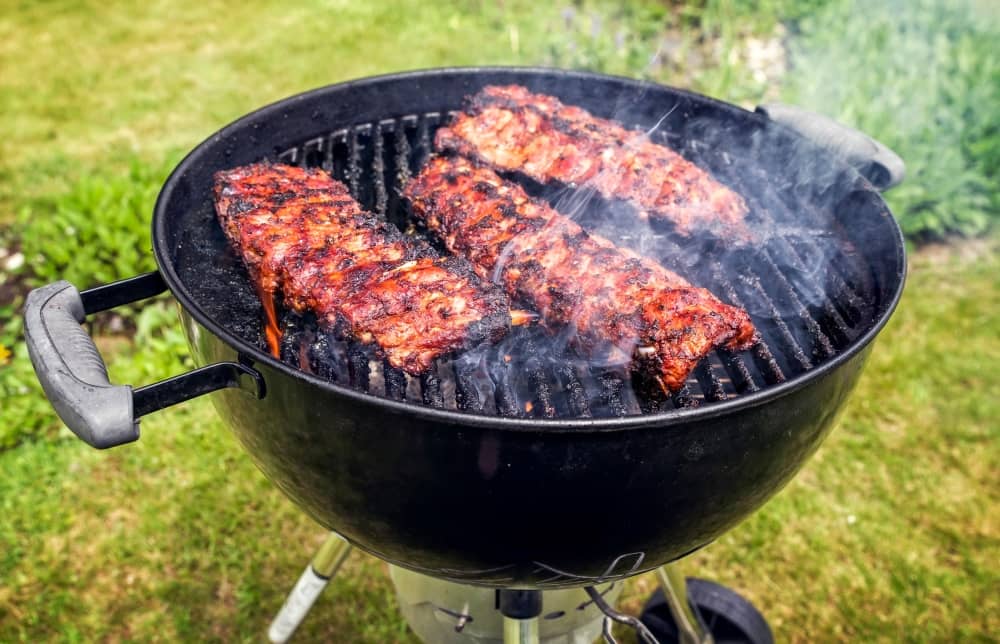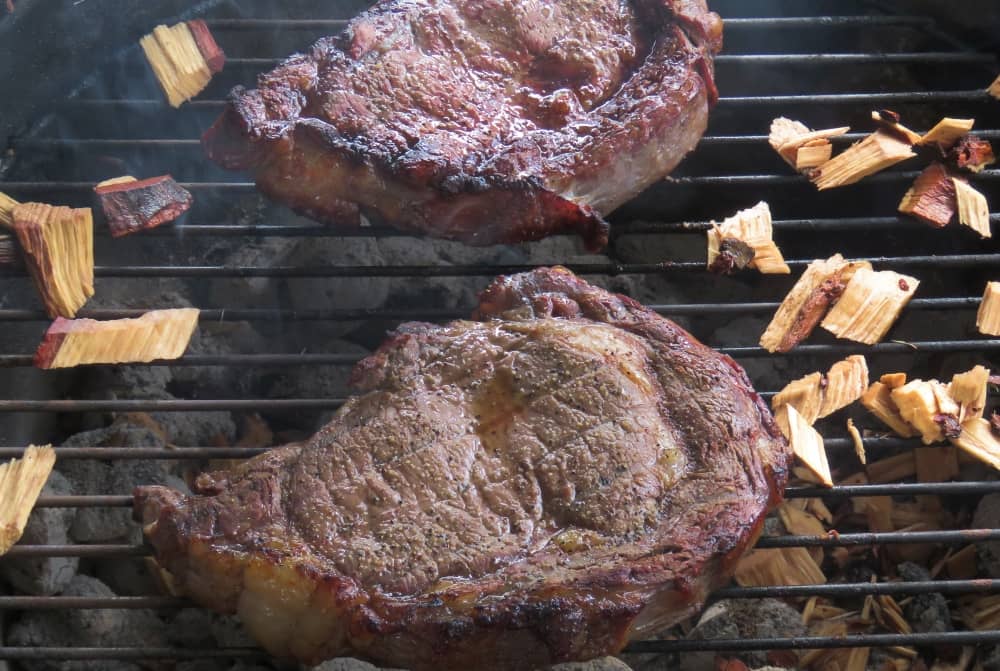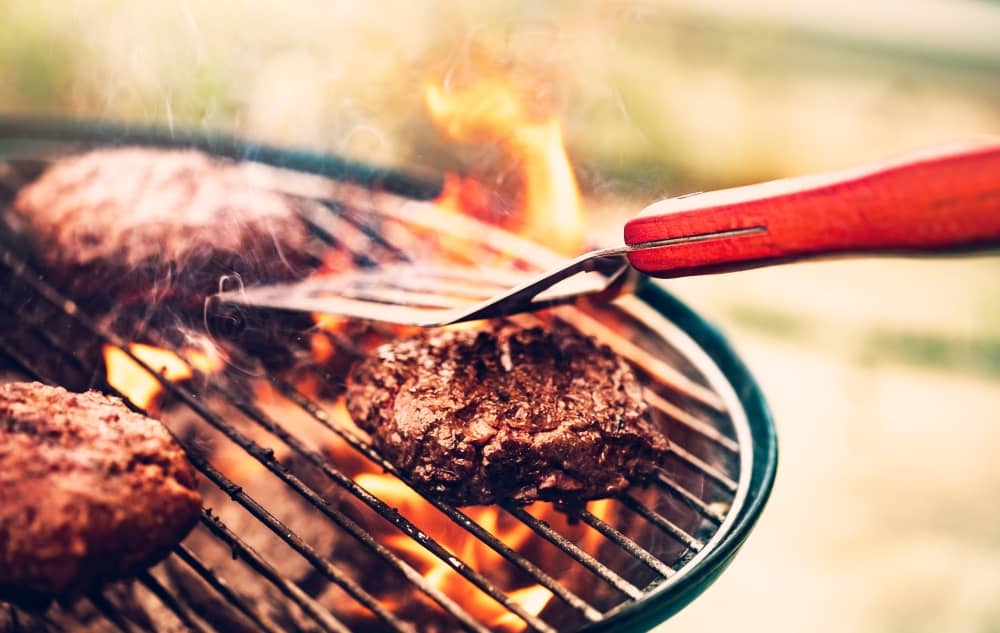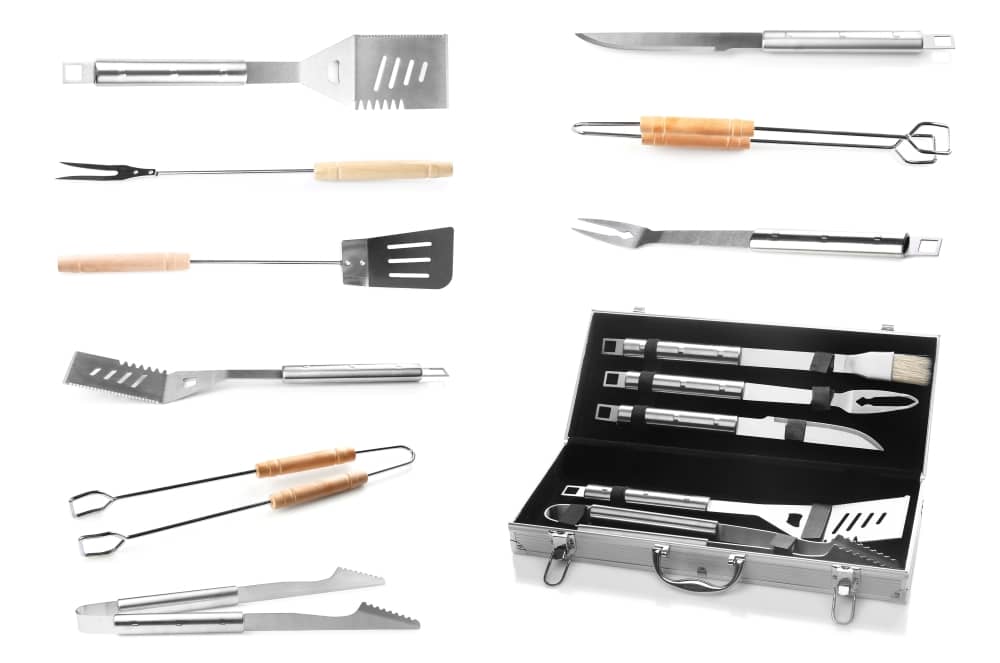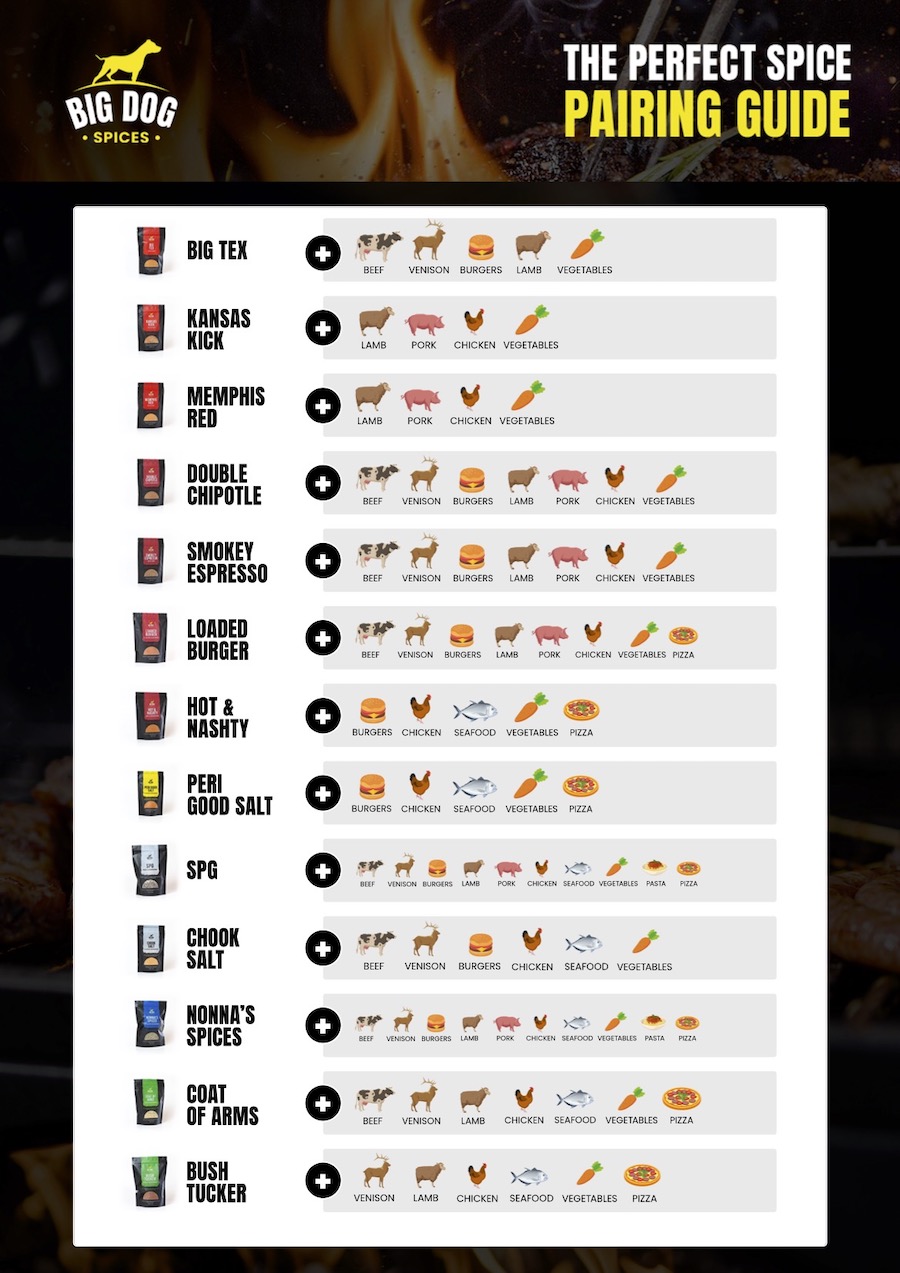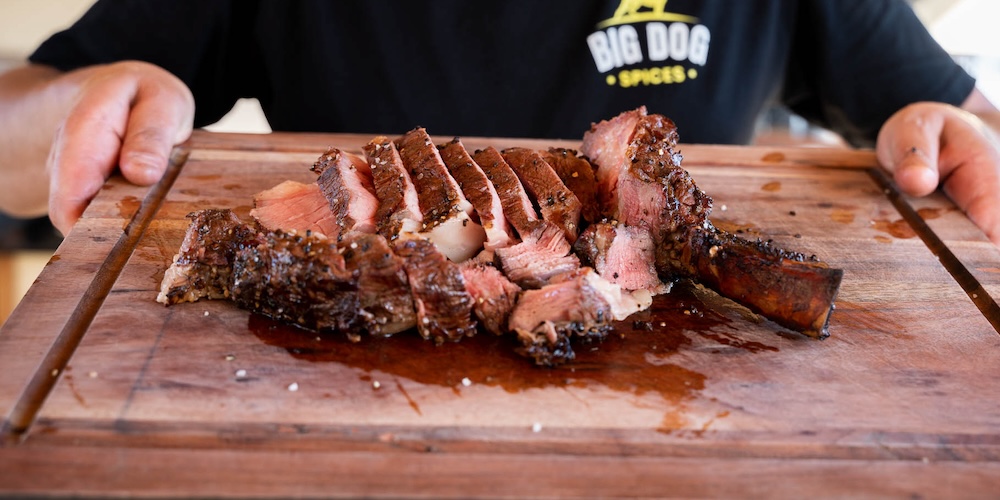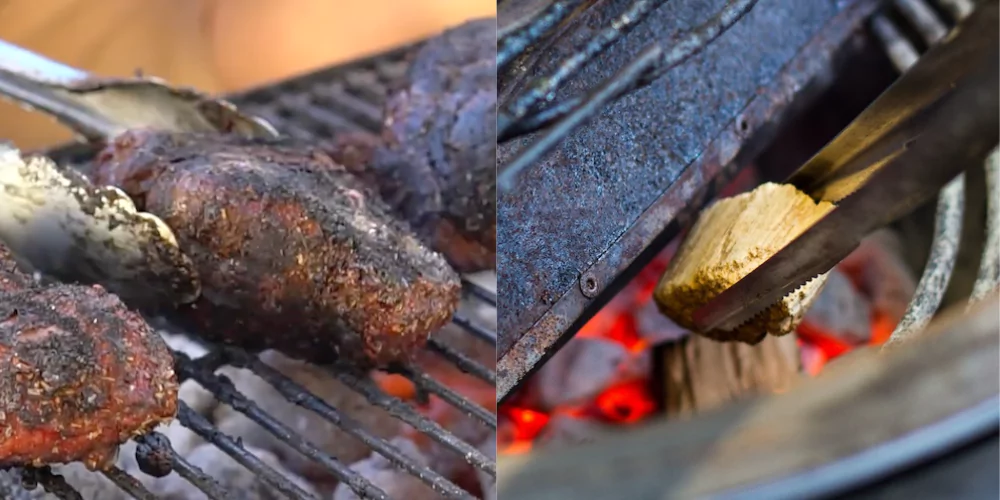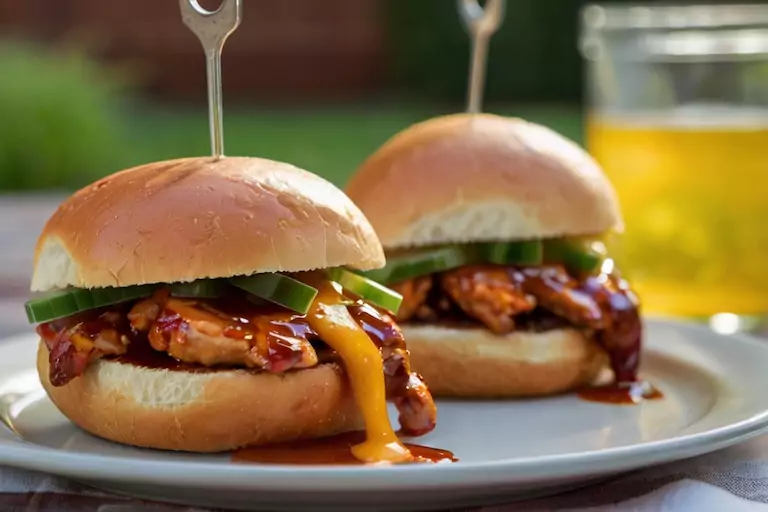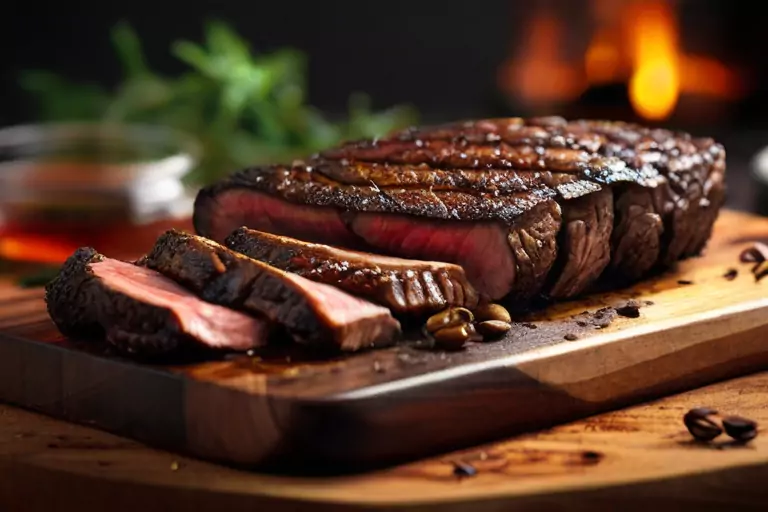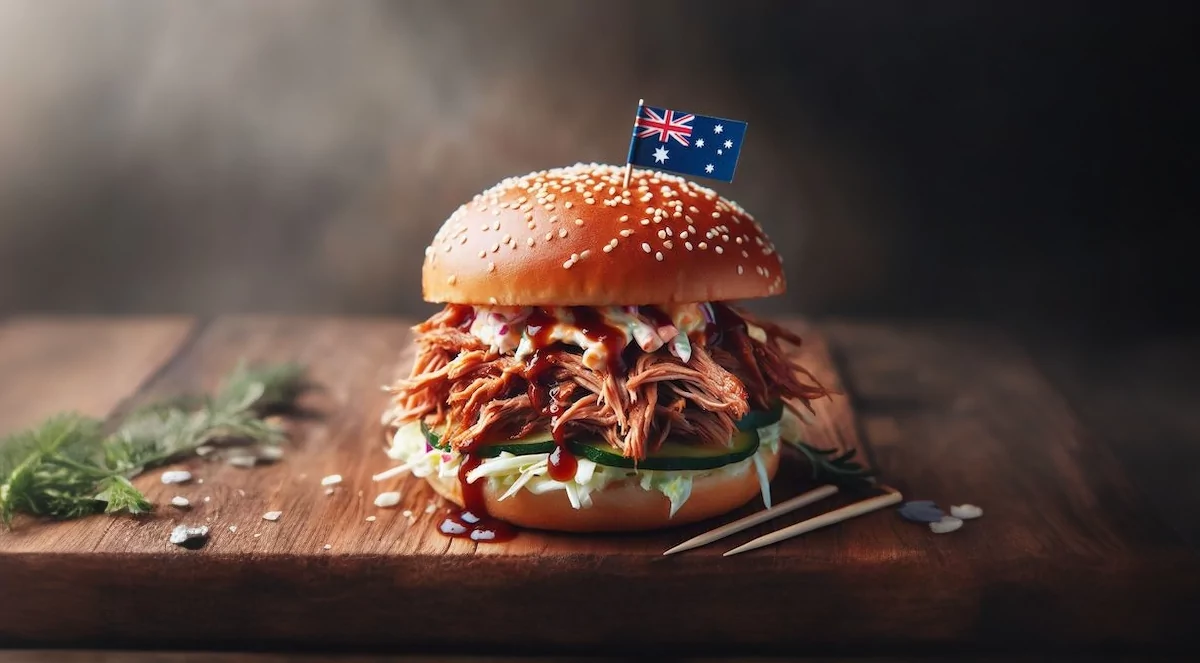I love cooking BBQ dishes that feed the whole family. Some of my favourites include burgers, pulled pork, chicken wings and ribeye. I like to experiment with different cuts of meat, varying levels of smokiness, and delicious home-made sauces.
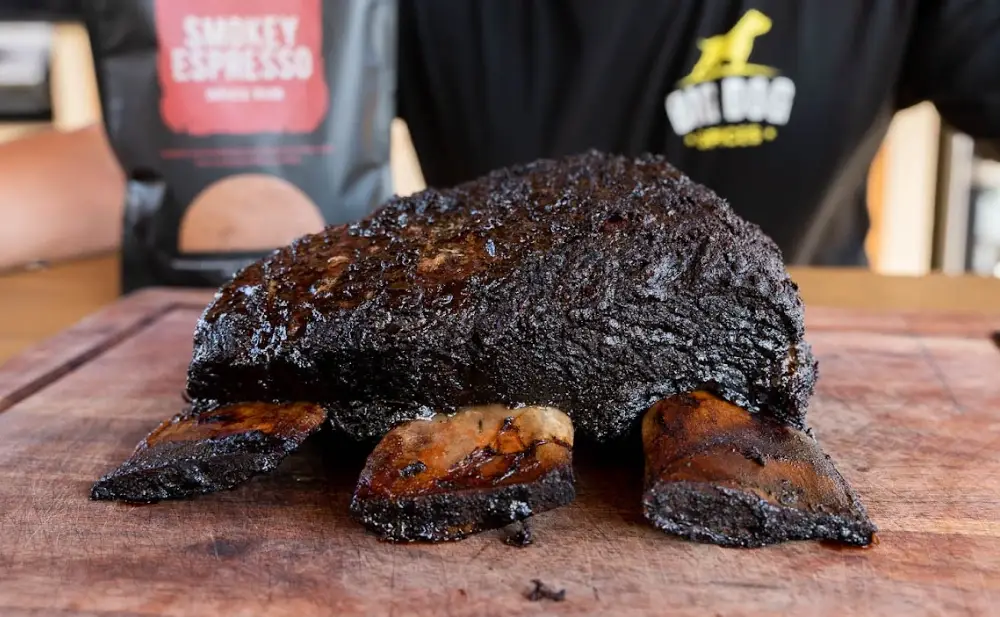
Key Takeaways
- Charcoal Types: Briquettes for consistent burn, hardwood for flavour.
- Grill Selection: Consider size, cleaning ease, and price.
- Grill Types: Options include portable, kettle, barrel, and ceramic cookers.
- Starting Methods: Use a charcoal chimney, lighter fluid, or electric starter.
- Temperature Control: High for steaks, medium for chicken, low for fatty fish.
- Grilling Tips: Avoid pre-coated briquettes, control heat with vents, and oil grates.
- Cleaning: Regularly remove ash, clean grates, and wipe the interior/exterior.
- Safety: Always grill outdoors, keep a fire extinguisher nearby, and ensure grill stability.
- Accessories: Equip with spatula, tongs, meat thermometer, and metal skewers.
- Flavour Boost: Explore various dry rubs and spices for enhanced taste.
Without a doubt, charcoal grilling is one of the most popular ways to cook in Australia. Grilling on charcoal can significantly influence the delicious smoky flavour of your food.
Charcoal is a readily available fuel source. However, cooking with it can be a little more complex than using an electric grill or gas stovetop. It took me a number of years to master the art of cooking with charcoal, but it was well worth it.
Want to learn how to use a charcoal grill like a pro? Read on!
Types of Charcoal Grilling
Charcoal is a lightweight black carbon residue from burning cooking hardwood at high heat and low oxygen until it chars. When you light the charcoal, the carbon combines with oxygen to create a significant amount of energy that remains steady, hot and burns clean.
Charcoal Briquettes
The most common form of charcoal is the briquette, which is made from leftover woods and sawdust combined with binders. Its miniature pillow shape and size allow it to burn consistently and longer than other types of charcoal.
Hardwood Lump Charcoal
Charcoal lumps are made from natural wood pieces, so they vary in shape and size. Lump charcoal is one of the most flavourful fuel sources, producing tremendous and consistent smoke but it burns out faster than briquettes, making them perfect for searing steaks or cooking roasts.
Choosing a Charcoal Grill
You need to look out for a few criteria when buying a grill. They include shape, surface area, ease of cleaning, and price. For more information, I recommend checking out our Charcoal BBQ Buying Guide.
Charcoal grills come in many shapes and sizes. You should get a grill that suits your cooking style, storage space, and yard. The surface area is also essential.
You need to get a grill with enough room for your intended purposes.
One of the best ways to determine which charcoal grills are best is to look at the features they offer, such as ash containers. You should also consider your budget. There are many affordable charcoal grills and expensive ones with high-end features that you can choose from.
Types of Charcoal Grills
Here are the most common types of charcoal grills:
- Portable Charcoal Grills – These are square or rectangular compact charcoal grill models designed to move before and after use for storage. They have features that ease mobility, such as collapsible legs, lids with venting, etc.
- Square Charcoal Grill – This model is similar to the kettle grilling design. It has adjustable vents and four legs, two of which have wheels that enable tilting and movement for storage when it is not in use. This model does not have extra characteristics such as hotdog shelves or baskets. However, some manufacturers include these features.
- Japanese Hibachi – These are small portable grills made from aluminium, cast iron, or steel. They offer two cooking grills over a charcoal pan made from sheet metal. The grates are adjustable, allowing you to move them up or down, thus regulating the amount of heat reaching the food. They do not have extensive accessories, including lids.
- Brazier – This type of grill can be explained as small square/round grills with no covers. They have a metal pan filled with charcoal under a mesh grate or wire. They were used before the 1950s, but they are still available in stores today.
- Kettle Grill – Kettle grills, such as the famous Weber, are the most popular grills worldwide. I personally own a Weber kettle and love it! They are usually circular with a dome lid, charcoal grid, cooking grill, round lower chamber, and legs. The round shape of the lower section is meant to distribute heat evenly over the grill surface. The domed top is intended to trap hot air and effectively allow circulation on the grill surface, thus holding in the flavour.
- Barrel Grills – As the name suggests, they are made from barrels. 55-gallon steel barrels are placed sideways and cut in half. Hinges are used to connect the top and lower half. The lower half holds the charcoal, and a grate is placed on top while the top half acts as the lid. Barrel grills often incorporate vents in the top and bottom and a chimney on the cover and legs.
- Cart Grill – Cart grills are rectangular charcoal grills that are easy to use and move around. They have a lid attached to the base by hinges. Cart grills are fitted with a grill for food and a charcoal grid that can be lowered or raised to adjust heat levels. Most cart grills are equipped with an ass collecting drawer at the bottom, wheels, side trays, and storage shelves.
- Ceramic Cookers – They are made from clay or ceramic materials, which are designed in an oval shape with a domed lid hinged to a round bottom. This charcoal grill has the advantage of smoking meat and slow cooking. They can also be used to barbeque or grill foods.
- Tandoor Oven – This charcoal grill was invented in Pakistan and India. It uses charcoal and comes in various designs. It combines grilling and oven cooking techniques to affect cooking.
How To Start a Charcoal Grill
There are a few different methods for how to start a charcoal grill. I have given a simple rundown of the top three options below.
Using a Charcoal Chimney
If you are using a charcoal chimney (which I highly recommend as it makes the lighting process a lot easier), I’ve laid out the steps below:
- Add charcoal to the chimney to ensure the charcoal reaches about 3/4 of the way to the top.
- Place starters under the chimney; starters are any items that catch fire quickly, such as newspapers, paper cups, wax, wood chips, dryer lint, etc.
- After placing the starters, you need to light them up and keep an eye on your charcoal until you see flames poking through them. Grab the chimney handles and pour the charcoal onto your grill.
Using Lighter Fluid
One alternative to the above is starting a charcoal grill with lighter fluid. However, using lighter fluid can be dangerous and complicated as most people light inconsistently or add more liquid than is necessary. If you prefer this method, I have laid out the steps below:
- Arrange the charcoals into a pyramid shape on the grill, having a large base, and stack the coals into smaller and smaller layers.
- Evenly coat the charcoals with the fluid and allow them to absorb the liquid for 30 seconds after absorption.
- Use a match with a long nose or a grill lighter to evenly light your charcoals in several places, and do not add lighter fluid.
- Once they catch fire and turn white, spread them evenly, top them with a grate and start grilling.
Using an Electric Fire Starter
Lastly, there is the option of using an electric fire starter. The steps for this have been outlined below:
- Spread your charcoals on the grill and arrange them into a pyramid shape, similar to when using lighter fluid.
- Plug your electric fire starter and place the nose directly in your charcoals, and they will begin heating immediately.
- Stay in this position until you notice sparks from the charcoal; at this point, you pull the lighter a few inches away from the pyramid.
- Move the fire starter around the charcoals while keeping it a few inches away until the fire starts.
- Once the fire starts, turn off the electric fire starter, spread the charcoal on the grill, top with a grate when they turn white, and start grilling.
Regardless of which method you use, I always recommend arranging your chunks of charcoal into a pyramid for the best results.
Helpful Tips
If you’ve ever struggled with lighting charcoal or want to simplify the process, we’re here to help! Watch our video below as Luke walks you through step-by-step instructions on safely using a charcoal chimney starter.
Charcoal Grilling Temperatures
Understanding the various heat levels of charcoal and knowing which foods are best cooked at different temperatures will help you master the art of grilling with charcoal.
What to Grill on High Heat
Foods such as burgers, steaks, kangaroo, and dense vegetables like corn on the cob can handle high heat. Grilling on high heat ensures you get the perfect sear on the outside while keeping the inside juicy. When grilling on high heat, create two sections on the grill for direct and indirect heat cooking.
What to Grill on Medium Heat
Proteins that need to be cooked thoroughly like pork chops, fish, chicken, sausages, and uncooked hot dogs, along with denser vegetables and fruits such as eggplant, capsicum and pineapple, are best cooked on medium heat.
What to Grill on Low Heat
Although high heat is recommended for cooking most types of food on the grill, some foods require low heat. For example, fish, salmon and other fatty proteins. If you’re looking to find more ways to bring more flavour to your seafood and fish dishes, check out our seafood rubs & spices.
Low heat is also great for smoking and is the temperature we used for our delicious BBQ smoked beef brisket burgers.
How to BBQ on a Charcoal Grill
If you want to learn how to BBQ on a charcoal grill, simply follow these four key steps and you’ll be grilling like a pro:
- Preheat your charcoal grill – If you have read through the article, you already know how to light the charcoal grill and the importance of allowing it to heat up before you start grilling your meat.
- Stir the charcoal and place clean grates on the grill – Stir the charcoal to mix the burning pieces with the ones that are not yet ignited. Add more charcoal if you need to and spread. After uniformity on the charcoal pieces, oil your clean grates and place them on your grill. Cover the charcoal grill for at least five minutes.
- Adjust the vents – Use the vents to control the temperature of your fire. Wider vents allow more air into the fire, which increases its heat, while partially closed vents restrict air flow and produce a cooler flame.
- Place the meat and start grilling – After adjusting the vents and attaining the desired temperatures, it is time to place your meat on the grill. Close the lid and ensure the bottom vents are open and the top is closed. Let the meat cook for a few minutes, lift the lid and flip one piece with a spatula or tongs.
If the piece you turned in is nicely cooked, the other pieces are also ready to be flipped. After some time, cut one piece of meat using stainless steel scissors; if it is well cooked, the rest of the pieces are also ready. Using your spatula and tongs, move all the meat from the charcoal grill and place it in your roasting pan. Cover the pan with a lid and let the meat rest for around ten minutes before serving.
Pro Tips for Charcoal Grilling
1. Avoid Pre-Coated Briquettes
Pre-coated briquettes are coated with lighter fluids that will impact a strange flavour on your food. So if you use charcoal briquettes, go for the non-coated ones for a healthier and tastier meal.
2. Do Not Overdo the Charcoal Amount
Many people mistake putting too much charcoal on a grill, particularly when they start out. The best way to determine the charcoal you need is to think about the temperatures you are targeting. The more charcoal you use, the higher temperatures you will get, while the lesser charcoal you use, the lower temperatures you will achieve.
3. Wait Until Your Charcoal is Ready
Waiting until your charcoal is ready is a crucial thing to follow. If you start grilling your food while the charcoal is still black, it will turn grey-white while you are cooking, and the temperatures will rise to a disturbing level; thus, some parts will grill very quickly or over-grill. After you light the charcoal, you should wait until they turn grey-white before you start grilling your food.
4. Add Wood Chunks for Flavour
Adding a few flavoured wood chunks is a pro grilling tip. Dried wood used for flavouring purposes includes mesquite, walnut, hickory, apple, cherry, oak, straw, pecan, heather, alder, and camphor. These woods add a smoky flavour to your food, especially when grilling at low temperatures for extended periods. Remember to soak the wood chips first.
5. Charcoal Cooking Zones
Grilling involves moving food around the grill and utilising different temperatures to achieve perfectly grilled foods. You should push the charcoal to one half of your grill and leave the other area for indirect heating.
- Direct heating zone: The zone with charcoal is for direct heating, for example, grilling steaks that need more heat.
- Indirect heating zone: You can use the indirect heating zone to keep grilled food warm. In other words, this setup enables you to sear and roast on the same grill.
6. Make Sure You Have Enough Heat
It’s always a good idea to let the grill heat up before you start grilling. This prevents food from sticking to the grates, helps sear the outside of thick cuts and makes it easier to turn while cooking. That said, not all grills are created equal so it never hurts to do a trial run (or two).
7. Oil Your Grill Grates
The best way to prevent your food from sticking to the grill while it’s cooking is to oil the grates and then give them a few minutes to heat up before you start grilling.
8. Control Temperatures Using the Grill Vents
Grill vents fitted at the bottom and top of your charcoal grill are meant to control airflow, regulating the temperatures within your grill. If you want higher temperatures, open the vents to let air in, and if you want lower temperatures, close the vents more. Controlling the grill vents will also assist you in avoiding and managing grill flare-ups.
9. Turn Food Only if Possible
Do not fuss too much with whatever you are grilling. Try to grill/cook halfway through on one side and then flip. Flipping less achieves the best grill marks and well-cooked food.
10. Do Not Press Your Food on the Grill
As satisfying as the sizzling sound is when you press your steaks or burgers on the grill, it is advisable to avoid pressing since it squeezes out the juices; thus, drying the food. For example, it could lead to a dry burger.
11. Put the Charcoal Out Safely
When you are done grilling and want to put the charcoal out, close all the air vents to snuff out the fire. Wait 24 hours, clean the charcoal ash from the grill, collect any unburned charcoal, and store it for next time.
12. Keep Leftover Charcoal Fresh and Safe
If there is any leftover charcoal and you plan to use it next time, you have to ensure it is sealed tightly and kept away from moisture/water. Charcoal has a shelf life of up to two years when stored properly.
How to Clean a Charcoal Grill
Cleaning the charcoal grill is essential to ensure you keep grilling flavourful food throughout. Follow these steps to ensure you clean your charcoal grill effectively:
- Prep for cleaning – This step involves removing the grates and emptying any leftover charcoal or ash into a metal container.
- Wipe the interior – The inside of the lid is often coated with grease and smoke deposits that might look like flakes of paint. It is advisable to use a stainless steel brush to brush the deposits away. Then wash the cooking bowl and the lid with mild dish soap, steel wool pad, and water. Wipe the lid after every grilling session with soap and water to prevent future buildup while the grill is warm.
- Clean the grates – It is advisable to clean the grates before you start grilling. When you place the charcoal in the grill and let the grate preheat, take it out and remove any debris on it using a stainless steel bristle brush. If your grill grates are in a worse condition, try deep cleaning them with vinegar and soak them overnight in a mixture of one cup of baking soda and two cups of vinegar. Scrub with a sponge, rinse with water and pat dry.
- Reassemble – After cleaning the lid, bowl and grates, reassemble the grill.
- Clean the exterior – Clean the body with a soft cloth and warm soapy water. If your charcoal grill has an ash collector, wipe it as well.
Grilling Tools and Accessories
Below are a few tools and accessories that you need when grilling:
- Spatula and tongs – This is for flipping the foods when you are grilling
- Meat thermometer – A thermometer ensures that you get the temperatures right, especially if you are following a particular recipe. Tip: I recommend the MEATER Plus. It’s pricey, but definitely worth it if you’re barbecuing often.
- Chimney starter – Used to light up the charcoal before you transfer it to your charcoal grill.
- Metal Skewers – Metal skewers are better than wooden skewers because they are reusable and easy to maintain, especially if they are stainless steel.
Other accessories include grill baskets, grilling planks, hardwood charcoals, grill light, and grill brush.
Safety Tips to Follow When Grilling
Grilling at home can get out of hand if you do not follow the necessary measures. Below are a few grilling safety tips I recommend following to avoid any mishaps:
- Always grill outdoors – You should not grill/cook indoors when grilling with a charcoal grill. Open flames are perilous indoor fire hazards.
- Do not leave your grill unattended – When fires start, they tend to spread quickly. A fire can double in size every thirty seconds. Always ensure you are at an eye distance if you step away from your charcoal grill.
- Give your grill some space – Ensure that you place your charcoal grill where there is plenty of space. Avoid low-hanging branches, outdoor furniture, and backyard decor. Grills cause burn marks and other types of damage even without a fire, so ensure you have plenty of distance between the grill and entertaining area.
- Have a fire extinguisher nearby – Having a fire extinguisher nearby will help if a fire starts or prevent any tiny fires from becoming significantly worse.
- Clean your grill regularly – Cooking on a charcoal grill releases fats and grease that can build up over time if you don’t clean the grill. Grease and fats can be flammable and cause large flare-ups.
- Make sure your grill is stable – If your charcoal grill is not stable, it might fall and start a fire with the nearby materials. Ensure you place the charcoal grill on a level surface, for example, paved concrete or a flat area on the grass.
- Never add lighter fluid to hot charcoal on a grill – Lighter liquid is extremely dangerous if mishandled. Ensure you only use lighter fluid when starting the charcoal grill. Applying lighter fluid to burning charcoal can cause major flare-ups. The flames can also catch the liquid’s stream and ignite the entire bottle.
- Properly close your grill – After using your charcoal grill, wait until the charcoal pieces are completely cool before throwing them away.
Understanding how charcoal grilling works is essential to cooking effectively with a charcoal grill. Remember to have the right equipment and always prioritise safety.
Spice Guide
No matter what charcoal grilling method you use, these flavours are sure to blow you away. Browse our spice guide and check out our range of dry rubs, spices, and seasonings to create the perfect mix that will take your BBQ to the next level!
Charcoal Grilling FAQs
How long should charcoal burn before cooking?
The charcoal should burn for about 20-30 minutes before cooking.
What is the best way to cook on a charcoal grill?
The best way to cook on a charcoal grill is to use direct heat. Arrange the lit coals into a pyramid shape, waiting 20-30 minutes for them to reach the perfect temperature with the lid closed, and ensuring you flip the meat only once for an evenly-cooked, tender result.
Do you leave the lid open or closed when heating charcoal?
When heating charcoal, you should leave the lid open. Once the coals are lit, close the lid and wait for the grill to reach the desired temperature before cooking.
What’s the best charcoal grill to buy?
For a complete rundown of our recommendations and to figure out what type of grill is best for you, I recommend reading our Charcoal BBQ Grill Buying Guide.
Should I grill with charcoal or wood?
Charcoal grilling is convenient, cost-effective, and known for its classic smoky flavour, but it can be messy. It’s ideal for cooking with direct heat. On the other hand, wood grilling offers versatile flavours but requires more time and monitoring, with a risk of charring. It’s perfect for cooking meats with indirect heat. Combining both methods can create mouthwatering flavour profiles and bring out your inner chef. For more details, check out our blog on charcoal vs wood for grilling.
Summary
In this blog, I’ve covered the essentials of how to use a charcoal grill to achieve perfectly grilled meat every time with whatever type of method you’re using.
To put it simply, it’s best to start by arranging lit coals into a pyramid shape, creating a scorching hot zone for that perfect sear before flipping only once. And, of course, don’t overlook the basics: learn how to measure and light coals for consistent heat and gain control over your grill’s temperature.
With these insights, you’re well on your way to becoming a true charcoal grilling expert. So, fire up that grill and savour the delicious results!

